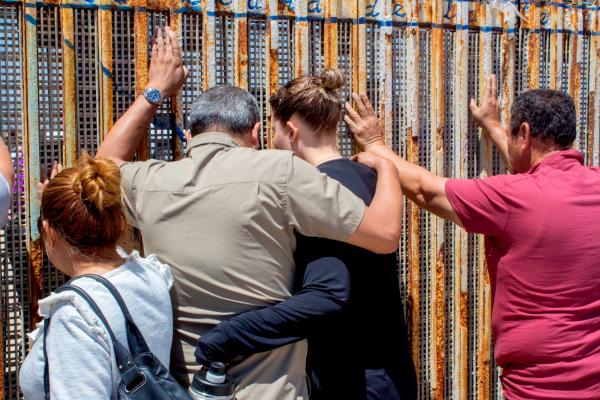AT THE BORDER between San Diego and Tijuana, Mexico, people come together once a week for communion across the dividing line. El Faro: The Border Church/ La Iglesia Fronteriza is held every Sunday on both sides of the border. For some families, it is their only opportunity to see loved ones who have been separated from them by immigration status.
The service is at Friendship Park, or “El Parque de la Amistad,” the piece of land that lies between the mesh border fence and the larger border wall that keeps the United States separate from Mexico. Usually, the outer wall is closed, cordoning off any opportunities for people on opposite sides of the border to connect. But for four hours each weekend it opens. For most people, the border is a place of division. But for Pastor John Fanestil, the borderland, or “la fronteriza,” is “a place of encounter.”
Fanestil, who preaches at First United Methodist Church of San Diego, has been running El Faro: The Border Church for almost a decade. He meets me at the trailhead of Border Field State Park, the 1,000-plus-acre San Diego nature preserve that borders the sprawling metropolis of Tijuana. In the summer months, you can drive all the way down to the border, but the trail floods when it rains and is often closed to vehicles in the winter. Today, it’s shut because of a sewage spill from Tijuana, so we hike down.
Fanestil was raised in La Jolla, an upscale neighborhood in San Diego, but says that his first real introduction to Spanish culture was in Costa Rica, where he did a year of seminary. His first appointment after ordination was in the inland border town of Calexico, Calif., which is adjacent to its Mexican sister city, Mexicali. He fell in love with the border culture, and after serving congregations in Los Angeles and Orange Country, he was placed in San Diego in 2004.
Read the Full Article

